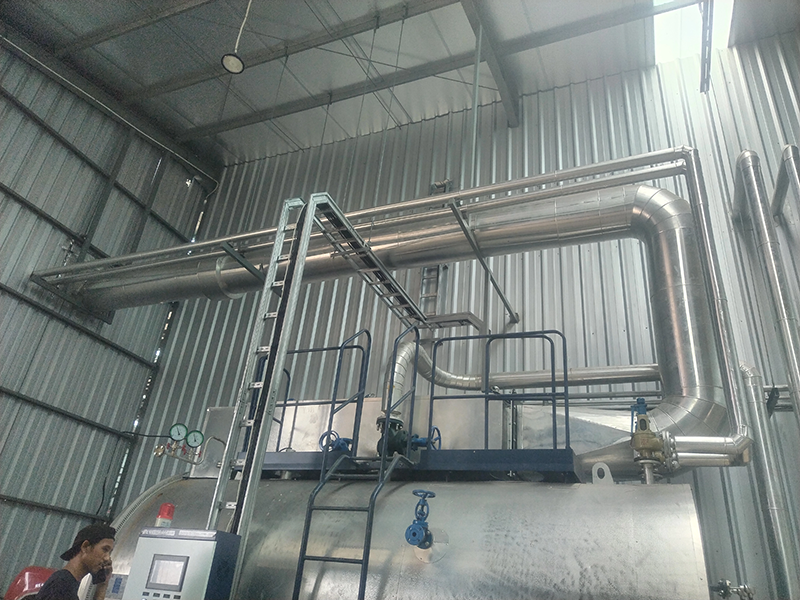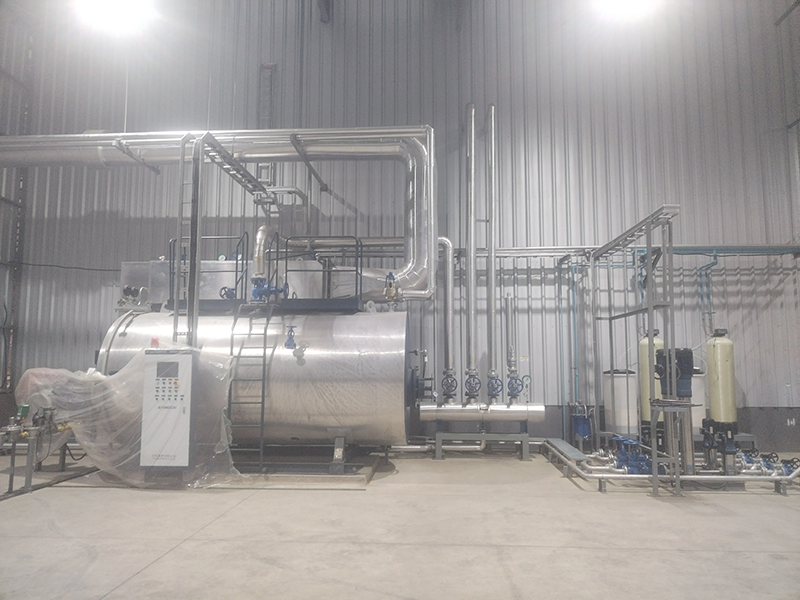Multi-energy coupling heating is an efficient heating method. It combines the advantages of multiple energy sources and realizes peak shaving and valley filling through multi-energy synergy, which has significant technical and economic advantages. The following is a detailed analysis of multi-energy coupling heating:

Principle:
The multi-energy coupling heating system realizes the cascade utilization and coordinated optimization of energy by integrating the temporal and spatial complementary characteristics of multiple energy sources, such as geothermal energy, air energy, solar energy, wind energy and other renewable energy sources, as well as traditional heat sources such as gas and coal.
The system usually contains three types of elements: base load energy, regulating energy and energy storage device, and realizes the complementarity and coordinated work of various energy sources through intelligent regulation.
Advantages:
Improve energy utilization efficiency: The multi-energy coupling system can make full use of the advantages of various energy sources to realize the cascade utilization and efficient conversion of energy.
Enhance system stability: The complementary characteristics of multiple energy sources enable the system to cope with different weather and load conditions, and improve the stability and reliability of heating.
Reduce operating costs: Through multi-energy synergy and intelligent regulation, the system can optimize energy configuration and operation strategy and reduce operating costs.
Environmental protection and emission reduction: Multi-energy coupling heating system can reduce dependence on traditional fossil energy, reduce carbon emissions and environmental pollution.
In practical applications, multi-energy coupling heating system has achieved remarkable results. For example:
In some areas, the combination of "wind power + air source heat pump" is adopted, and the cleanliness of wind power and the high efficiency of air source heat pump are used to achieve low-carbon and high-efficiency heating.
In other areas, the "geothermal + solar energy cross-seasonal heat storage" architecture is adopted, and the stability of geothermal energy and the sustainability of solar energy are used to achieve stable and reliable heating.
Development trend:

With the advancement of global energy transformation and low-carbon development, multi-energy coupling heating will become an important development direction of future heating systems.
The application of digital and intelligent technologies will further improve the efficiency and reliability of multi-energy coupling heating systems.
Challenges:
Technical challenges: The design and operation of multi-energy coupling heating systems need to comprehensively consider the characteristics of multiple energy sources, load demand, economic costs and other factors, and the technical difficulty is relatively high.
Economic challenges: Although the multi-energy coupling heating system has significant technical and economic advantages, the initial investment is large and requires joint support and promotion from the government, enterprises and all sectors of society.
Policy challenges: It is necessary to formulate and improve relevant policies and regulations to provide strong policy guarantees and market environment for the development of multi-energy coupling heating systems.
In summary, multi-energy coupling heating is an efficient, stable and environmentally friendly heating method with broad development prospects. In the future, with the continuous advancement of technology and the gradual improvement of policies, multi-energy coupling heating systems will be promoted and applied in more regions.







This article details the successful installation of the WNS4-2.0-YQ gas steam boiler in an Indonesian food factory, improving steam supply and efficiency. The project was completed in 7 days, with positive feedback on performance and service.
Recently, our company successfully supplied and installed a WNS4-2.0-YQ fuel (gas) steam boiler for a factory in Indonesia. The factory specializes in food processing and has high requirements for stable steam supply and energy efficiency.

The WNS4-2.0-YQ is a high-efficiency, energy-saving, and environmentally friendly horizontal fuel (gas) steam boiler with the following advantages:
After receiving the order, we promptly organized production and conducted rigorous quality inspections before shipping the boiler to Indonesia. Our team of professional engineers provided on-site technical guidance, and the installation, pipeline connection, and commissioning were completed within 7 days.
After commissioning, the boiler has been running smoothly, providing stable steam supply with low fuel consumption, significantly reducing production costs. The advanced automatic control system makes operation easier and minimizes labor costs.

The factory manager stated:
"This boiler has exceeded our expectations with its high efficiency and stable operation. The steam supply is sufficient, greatly improving our production efficiency. We highly appreciate the high-quality product and professional service provided by your company!"
The successful installation of the WNS4-2.0-YQ boiler in Indonesia further demonstrates the reliability and competitiveness of our products. We remain committed to providing high-quality boiler solutions worldwide and contributing to cleaner energy applications across industries.



Recently, a 4-ton steam boiler project was successfully completed and delivered, marking that the technical strength and service level in this field have once again been highly recognized by the market. This transaction not only demonstrates the tacit understanding and efficiency of the two parties in technology matching, demand understanding and project execution, but also injects strong momentum into the customer's capacity improvement and business expansion.
From initial communication to scheme design, production and manufacturing, to installation and commissioning, every link of the 4-ton steam boiler project has been carefully planned and strictly controlled. The project team has a deep understanding of customer needs, combined with its production process and steam usage characteristics, and tailored a set of efficient, energy-saving and easy-to-maintain steam supply solutions. By adopting advanced combustion technology and heat exchange design, the boiler not only ensures stable steam output, but also greatly improves energy utilization efficiency, meeting customers' urgent needs for energy conservation and emission reduction.

During the project execution process, the team overcame multiple challenges such as time constraints and technical complexity to ensure that the boiler was delivered on time, according to quality and quantity. After the installation, the professional team also conducted comprehensive performance testing and operation training to ensure that the customer's operators can master the daily operation and maintenance skills of the boiler, laying a solid foundation for the subsequent long-term stable operation.
The successful delivery of the 4-ton steam boiler not only provides strong support for the customer's production line upgrade, but also sets a new cooperation model for the industry. It once again proves that in the field of boilers, through in-depth market insights, professional technical accumulation and efficient project management capabilities, it can effectively meet the diverse needs of customers and promote industrial upgrading and green development.

Looking to the future, with the in-depth development of Industry 4.0 and intelligent manufacturing, the demand for efficient and environmentally friendly steam supply solutions will continue to grow. We will continue to uphold an innovative and pragmatic attitude, continuously improve our technical strength and service level, provide customers with more high-quality and efficient boiler products and solutions, and work together to create a more brilliant tomorrow.


